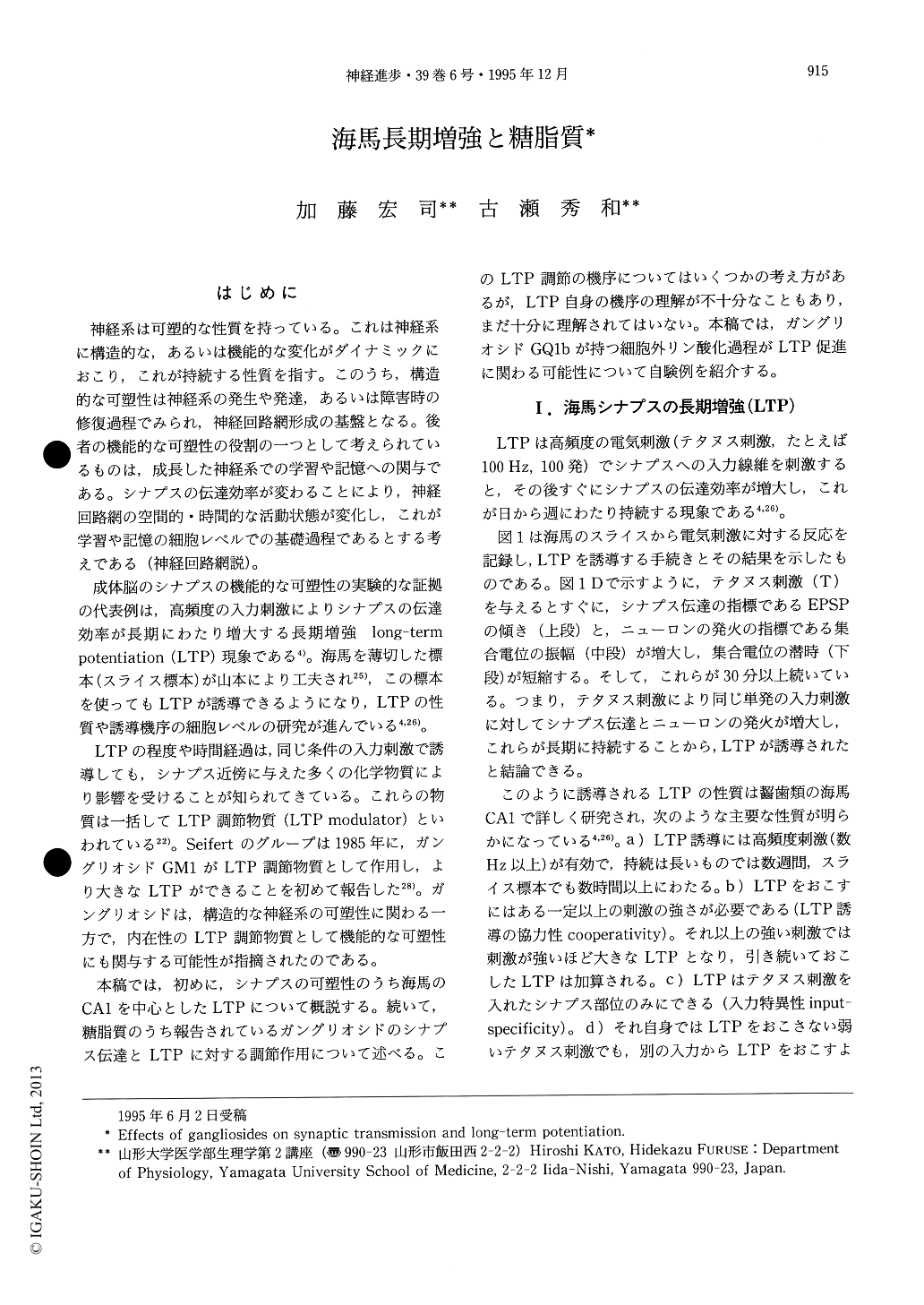Japanese
English
- 有料閲覧
- Abstract 文献概要
- 1ページ目 Look Inside
はじめに
神経系は可塑的な性質を持っている。これは神経系に構造的な,あるいは機能的な変化がダイナミックにおこり,これが持続する性質を指す。このうち,構造的な可塑性は神経系の発生や発達,あるいは障害時の修復過程でみられ,神経回路網形成の基盤となる。後者の機能的な可塑性の役割の一つとして考えられているものは,成長した神経系での学習や記憶への関与である。シナプスの伝達効率が変わることにより,神経回路網の空間的・時間的な活動状態が変化し,これが学習や記憶の細胞レベルでの基礎過程であるとする考えである(神経回路網説)。
成体脳のシナプスの機能的な可塑性の実験的な証拠の代表例は,高頻度の入力刺激によりシナプスの伝達効率が長期にわたり増大する長期増強long-termpotentiation(LTP)現象である4)。海馬を薄切した標本(スライス標本)が山本により工夫され25),この標本を使ってもLTPが誘導できるようになり,LTPの性質や誘導機序の細胞レベルの研究が進んでいる4,26)。
Gangliosides, sialic acid-containing glycosphingolipids, are abundant in the brain. The present article focuses on the modulatory effects of gangliosides on the transmission of synapses and the induction of the long-term potentiation (LTP) in the mammalian brain.
At first, the experimental procedures for the induction of LTP in a sliced hippocampal preparation and the basic properties of LTP are described. The cellular mechanism for the induction of LTP so far clarified is also summarized. And then, the effects of gangliosides are presented.

Copyright © 1995, Igaku-Shoin Ltd. All rights reserved.


